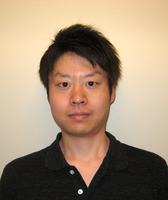Development status of the simultaneous two-color near-infrared multi-object spectrograph SWIMS for the TAO 6.5m telescope
Masahiro Konishi, Kentaro Motohara, Hidenori Takahashi, Natsuko Kato, Yasunori Terao, Hirofumi Ohashi, Yukihiro Kono, Tsutomu Aoki, Mamoru Doi, Takafumi Kamizuka, Kotaro Kohno, Takeo Minezaki, Takashi Miyata, Tomoki Morokuma, Shigeyuki Sako, Takao Soyano, Yuzuru Yoshii, Kosuke Kushibiki, Ken Tateuchi, Yutaro Kitagawa, Soya Todo, Tomoko Suzuki, Masao Hayashi, Ichi Tanaka, Ken-ichi Tadaki, Jun Toshikawa, Yusei Koyama, Yoichi Tamura, Toshihiko Tanabe, Masuo Tanaka, Ken'ichi Tarusawa, Shintaro Koshida, Masahito S. Uchiyama, Tomohiro Mori, Jumpei Yamaguchi, Yutaka Yoshida, Ryou Ohsawa, Bunyo Hatsukade, Tadayuki Kodama, Yutaka Kobayakawa, Rhythm Shimakawa
Ground-based and Airborne Instrumentation for Astronomy VII
2018年07月
DOI
Scopus


Click to view the Scopus page. The data was downloaded from Scopus API in December 26, 2025, via http://api.elsevier.com and http://www.scopus.com .